How to Use the Best Brush and Comb for Your Beard in 2022
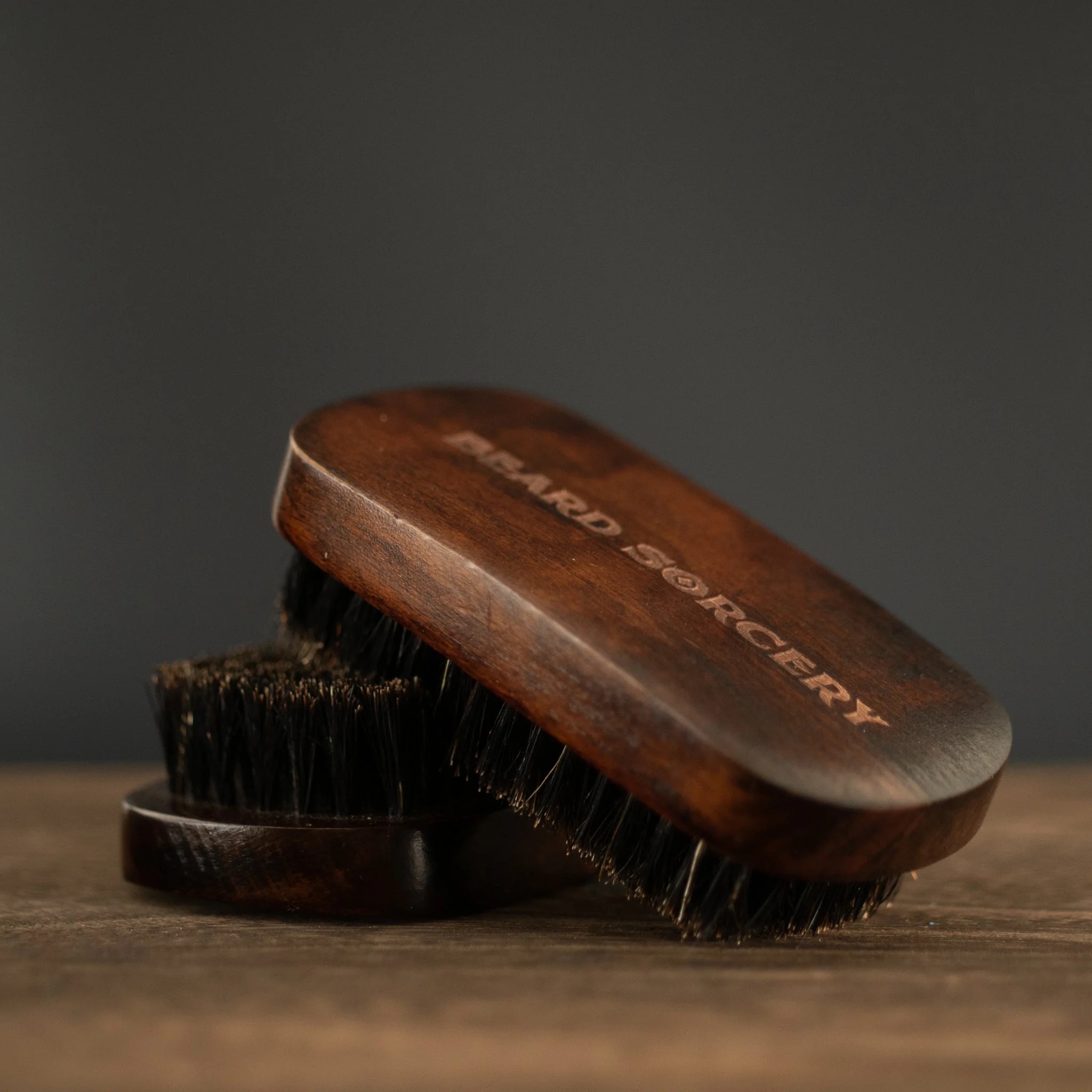 Medically Reviewed
Medically Reviewed
 Joe Nightingale, MBBS, MSc
Joe Nightingale, MBBS, MSc

With our newest beard care products here to stay - the Boar's Hair Beard Brush and our 100% Sandalwood Comb, we felt a chapter on the topic was needed. Our sages consulted and debated for quite some time in the tall wizard tower to bring this important information to light. So, traveller, read on to discover why beard brushes and combs are so useful and how they can level up your bearded experience!
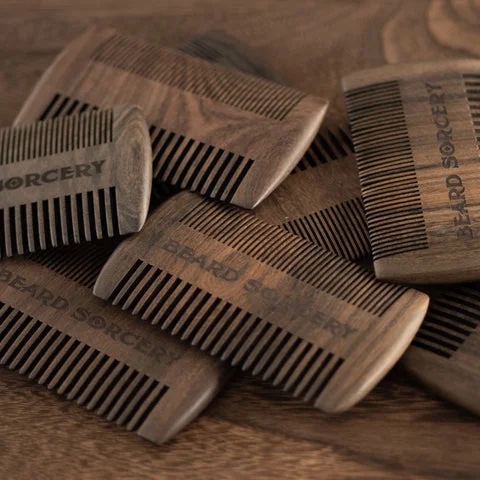
First, our sandalwood combs are ethically harvested from Australia (no poaching!). Sandalwood takes 50 years to mature in the wild and is vastly popular for its aromatic and strong qualities. There's just something very pleasing about the light touch of smooth sandalwood lining up whiskers in unison and straightening curled beard hair.
We learned to avoid metal combs. While long lasting and easily sustainable, they'll often catch and get tangled in your beard or mustache. Make note of the teeth spacing - closer together is for finer hair and shorter beards while the wide-set teeth are better suited to thicker, bigger beards. If your beard is soft and not overly thick, you can get away with combs that have teeth more widely spaced.
Pressed plastic is also not the answer. We know it can look amazing and also deal less damage to your wallet, but plastic combs are more likely to break, chip, hard to control because of flimsiness and add static to your facial hair. Our sandalwood comb, in comparison, is one of the best materials to use in creating a quality beard comb. It has strong, durable teeth, a comfortable grip, and won't add static to your beard.
Some will say that the boar's hair beard brush is more useful for the typical beardsman than the beard comb, but it really depends on the beard. Longer, thicker beards are better brushed while short-cropped full beards are better with the comb. Can you get away with one item but not the other? Sure, but they complete the set! And you will find that there are difficulties that both address in their own unique ways. In short, however, a beard comb is a useful tool for detangling and spreading beard products throughout your beard. A beard brush is made from different materials, and a good one has unevenly cut bristles while still being gentle enough to massage your face while detangling your facial hair.

So, why do we use boar's hair instead of a cheap synthetic? As it turns out, boars (plus their close relatives, pigs) and humans have similar hair structure and create very similar natural oil as well. Boar's hair creates sebum oil, which is the same type your skin produces for your beard. The sebum is still present on the boar's hair in our brushes, in trace amounts, just enough to aid in detangling your beard. Synthetic, or plastic brush hair can leave your mane full of static, and also lose their shape and fall out of the brush. Detangle with ease with a boar's hair beard brush because the jagged cut mimics your natural hair length variations and flows smoother and easier when brushing.
When you take good care of your beard, your skin is also going to thank you! A good beard brush is good for your skin as well as your beard. The boar's hair bristles gently scrape the surface of your skin. This will help to work products already applied moisturize deeper into your hair follicles. Brushing your beard is also a great method to help exfoliate and brush out dead skin or loose hair. Gives your skin the vital moisture and nutrients it needs to stay healthy and itch-free. A nice brush can feel like a spa treatment especially to those of us with dry, sensitive skin.
Our beard brush is compatible with all of our products except mustache wax, as it sticks in the bristles and is difficult to clean out.
Let's get to our guides. According to the sages, follow these steps for a clean beard every time!
Best Way to Use a Beard Comb
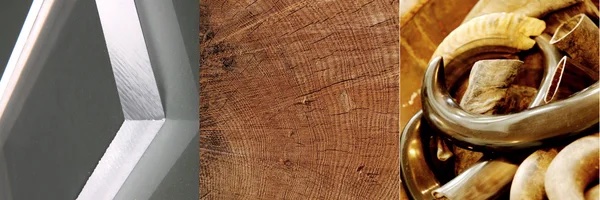
1. First, start out choosing one made from the right materials. Avoid metal or plastic combs as these add static and do not de-tangle hair as easily. Choose a material with a history of durability and easy use. These include cellulose acetate, sandalwood, peachwood, and naturally sourced animal horn - we leave it to you to decide which to use. We stand by our choice of sandalwood and have had great results from tons of awesome folks!
2. Get a comb that fits. And we mean your hands, not just your beard. You don't want to suffer unnecessary cramps after all. Know what teeth size may be better for your beard type: narrow teeth, wide teeth, handled or hand-held.
3. Now we begin combing. We recommend starting with a clean, dry beard or a freshly oiled beard. Do not comb your beard fresh out of the shower while it is still wet. Begin with your comb upwards from your neck and move smoothly upwards toward the chin and cheeks.
4. Be gentle. Don't force out the tangles, the point is to tidy up the beard, not yank it out. When you run across any tough tangles, perhaps work in some beard oil to help emulsify your beard and make it easier to separate the hairs. Don't pull at the tangles, because you can risk pulling or stressing the hair you've been working hard at growing out. Instead, lightly comb the top layers of the knot and it will slowly de-tangle without the need for ripping a patch in your face.
5. Now for the downward comb. Your beard has been fluffed by combing it in the opposite direction it grows, so we begin to comb the beard in a way that accents your natural beard growth and facial structure. Start combing downwards to style and shape your beard.
6. Most of us full beardsmen also sport the most remarkable of bristly inspiration - the mustache! You're gonna want to start from the middle and comb the 'stache to the sides of your face. The thinner side of the comb should work best for this part.
7. Incorporate this into your beard care routine. To build your best beard, it's always recommend to stick to the routine. One of the most important tips we can give you is make sure you put aside sufficient time for self care and personal grooming. Good looking beards take time, be patient and careful to get the best results!
Looking to compare the ease of use for each item? Read on for our full guide on brushing your beard!
1. Before you start, make sure you have the tools you need. This goes to saying with all guides. Here are some items we recommend to gather before you begin:
- Beard Sorcery boar bristle beard brush
- Beard or face wash (1-2x a week)
- Beard oil
- Potentially a styling product eg. beard balm or cream

We choose our own boar's hair beard brush over a synthetic brush each and every time. IThe natural sebum oil helps it glide effortlessly through beard hair while adding a slight conditioning element to your beard. We also recommend a styling product to use during or after brushing your beard. Sometimes, a knot can be very tricky, and rather than pull out your hard-grown beard hairs, apply some beard oil to ease the knot loose. It doesn't hurt to keep a beard balm or cream nearby after brushing your beard, that way you can keep your beard styled all day long.
2. Begin with a clean slate: Wash Your Beard
However, this is not required every day. Sometimes just a clean beard to start out is fine, but keeping it clean starts with a good wash routine.
Pro-tip: Don't overdo the washing. You can actually deplete your skin and hair of natural oils and dry out your hair and skin if your beard is washed daily. Avoid that. Only use beard shampoo twice a week at a maximum. Using it more than this can dry out the beard and the underlying skin. You should rinse your beard daily with at least lukewarm water to help wash away dirt particles. Doing this before a brushing session is an excellent way to go because a clean beard is much easier to brush than a greasy one.
3. Apply some Beard Sorcery Beard Oil to your clean beard. While our beard oils are essential for giving a beard a healthy shine and glow, it's also great at helping strengthen beard hair and soften it.Applying oil before you brush your beard is the best time to do so as the boar bristles will evenly distribute product throughout your beard more effectively and efficiently than your fingers ever could. Brushing also prevents the accumulation of oil in parts of your beard that can lead to greasiness, breakouts, and patchiness, all things you want to avoid.
4. Figure out the best brushing direction.The direction you brush your beard in is so important. It defines how your beard looks from all angles. But be careful, brushing in the wrong direction leads to untidiness - beards can be trained to grow in the wrong direction over time. Beard culture means committing a lot of time to the creation of a beautiful beard, and brushing in the same direction every time leads to a healthy, full, and disciplined beard that's been tamed over weeks and months.
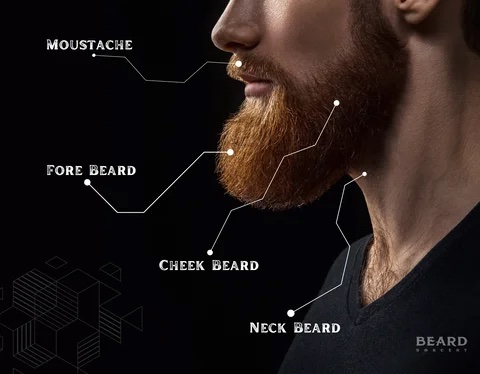
In general, brush downward towards your chin for the best outcome. This is because you want to brush in the direction of growth. This usually means brushing downward on the cheek, forebeard and mustache.
Cheek beard hair should be brushed either diagonally downward toward the chin or vertically downward. The mustache and fore beard should usually be brushed downward.
5. Brushing At The Cheeks
Before you start brushing, it's often helpful to brush your entire beard upward first.
It might sound odd, and the fluffed out mane you'll be left with will certainly look...different. But don't worry, it's only the first step of many to brushing out your beard.
The reasoning for doing this is that it will detangle some hidden hairs under the fore beard and help you spatially analyze the bulk of what you're working with.
Once you've finished, start brushing your cheek beard, working your way downward to your forebeard, in the desired directions as explained before. Be firm, but do not be too rough while brushing because you can pull out younger hairs or cause skin irritation.
When you get to the mustache, brush downward and look out for any stray hairs that creep over the upper edge of the top lip.
If you're bothered by these mustache hairs and tired of wiping them every time you eat, you may want to take this opportunity to trim them with our sharp and stylish Beard Sorcery scissors.
Once you've done this, it's time to tackle the hair growing behind your chin, on your neck: the neck beard.
6. Tackle The Neckbeard
This next section is details information on neck beard hair growth. Did you know that the neck-beard helps support and volumize the beard?
Alas, neck beards are probably the most difficult part to maintain as the hair tends to grow in multiple different directions, and at variable length than facial beard hairs. Plus, the skin is softer (due to it being your neck) and more sensitive to cutting and shaping.
So how can the beard brush help alleviate these neckbeard woes? It can be tempting to shave the whole area, but you will lose volume and support. Brushing upwards, against the grain, can make the beard look fuller but also untidy. Be careful of trimming too much away and coming back to a thin, scraggly beard!Make sure to define the neckline well and trim the neck beard hairs often. Tidy it up and brush it downwards, trimmed neatly.
7. Apply Some Styling Product
Does your beard look great when its freshly brushed out only to go wily and bushy an hour later? This is why we recommend using some beard balm or cream as you style your beard, to give it that extra bit of hold to last all day.
Beard balm has a nice, subtle, gentle level of hold, so is great if you're looking for something simple.
If you think you'd benefit from some product, use it.At this point, you can safely say you've brushed your beard to perfection!
Thoughts or comments? Submit a comment below and let us know how this guide helped you!
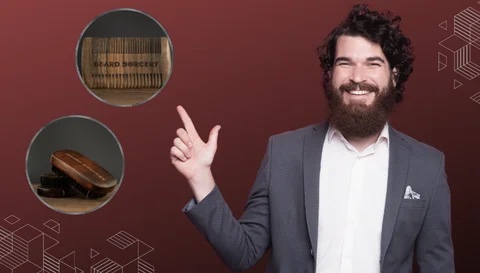

No comments yet…